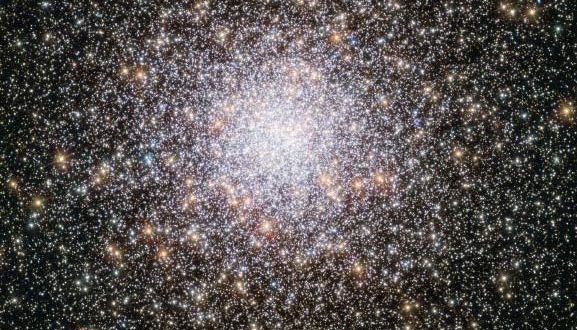The Hubble Space Telescope’s Advanced Camera for Surveys captured this view of NGC 362 which, being a globular cluster, contains hundreds of thousands of stars and resides in the outskirts of a galaxy.
The stars that compose globular clusters all orbit the cluster center, occasionally interacting, gravitationally, with a close-passing star. The orbits of these stars are typically not as circular as the orbits of planets in our Solar System.
Globular clusters are fairly clean of interstellar gases. Many of them have a core containing a group of unusually young and massive stars called blue stragglers.
These clusters once ruled our Milky Way Galaxy. Back in the old days, back when the Milky Way first formed, perhaps thousands of globular clusters roamed the Galaxy.
Many globular clusters were destroyed by repeated fateful encounters with each other or the Milky Way’s center.
Today, there are around 180 left — and the one shown in this Hubble image, NGC 362, is one of the more unusual ones.
As stars make their way through life they fuse elements together in their cores, creating heavier and heavier elements — known in astronomy as metals — in the process. When these stars die, they flood their surroundings with the material they have formed during their lifetimes, enriching the interstellar medium with metals.
Stars that form later therefore contain higher proportions of metals than their older relatives.
By studying the different elements present within individual stars in NGC 362, astronomers discovered that the cluster boasts a surprisingly high metal content, indicating that it is younger than expected.
Agencies/Canadajournal
 Canada Journal – News of the World Articles and videos to bring you the biggest Canadian news stories from across the country every day
Canada Journal – News of the World Articles and videos to bring you the biggest Canadian news stories from across the country every day



